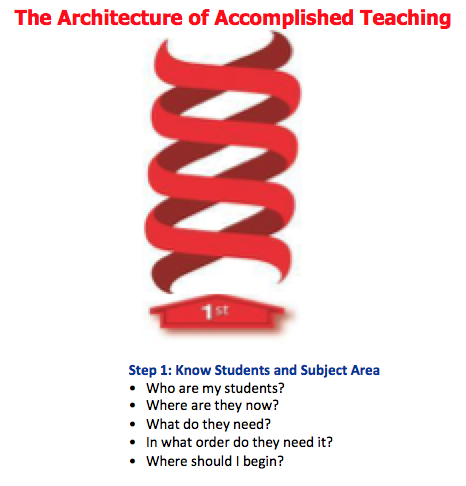The beginning of the school year is a stressful period: teachers readjust to their school schedules, master new curricula, set up classrooms, learn new policies, and, finally, meet a new group of students. The last part is most important to me, because it connects to the first step of the Architecture of Accomplished Teaching (AAT). That step is "knowing your students." Who are your students? What are their needs?

Knowing your students also means learning how to say their names. Pronouncing students’ names correctly conveys important messages: I care about you, I accept you, and you are important to me. By modeling this behavior, teachers can cultivate a classroom climate that is equitable and fair to students.
I know this firsthand. On the first day of kindergarten, my teacher tried to pronounce my name, Ambereen, several times in the front of the class. She couldn’t. She told me, "We’ll call you Amber." That name stuck with me from kindergarten through high school. It was easy to pronounce. When a substitute teacher would struggle with my name, it was embarrassing and opened the door for my classmates to tease me. My classmates bullied me for being Pakistani-American, and having a purely "American" name helped me fit in.
In high school, I realized that the name, Amber, stripped away a part of my identity. In my senior year, I attended an event at my brother’s school and was shocked to hear his teachers and classmates mispronounce his name. I knew he hated the fact that they couldn’t pronounce it. Afterward, I asked my brother why he never corrected them. He shrugged and said, "It’s just easier this way." His response mirrored my own behavior. I despised being called Amber, and, suddenly, I felt that I shouldn’t have to change myself in order to be accepted. In college and ever since, I’ve told everyone to call me Ambereen.
In the classroom, I’ve encountered many students who face the same challenge I faced. In one class, I had students from at least 15 different countries that speak multiple languages. I have 125 names to learn each year.
One of my core beliefs is that it’s essential to learn my students’ names—no matter how difficult it is for me. Teachers should have a positive impact on their students. I always honor a student’s request to be called by a nickname, but I still learn his or her first name. I tell my students on the first day of school, "It may take me time to learn your name, but I will keep trying. Your name is important to me."
I use several strategies to help learn students’ names. When I create seating charts, I leave room to include nicknames and correct pronunciation. If possible, I include pictures from our student database. On the first day of school, I greet students at the door, and while they complete a writing activity, I circulate around the classroom with my clipboard and quietly approach each student. I confirm names, ask for nicknames, and write down a name’s pronunciation to practice later. Every day, as students enter the classroom, I stand by the door with my clipboard. I look at each student and say his or her name. During the start of the lesson, I repeat this routine. If I mispronounce a student’s name, I apologize sincerely and follow up with a conversation later.
Early in the year is also the perfect time for students to write narratives and analyze experiences in their lives, helping them to build a relationship with me and better connect with the lessons I’m teaching. This kind of relationship building is also part of step one of the Architecture of Accomplished Teaching. I plan lessons with my seating charts in front of me. I ask myself, “What does this student need to meet this goal? How can I modify an assignment for this student?”
We can’t ignore pronouncing a student’s name correctly just for convenience. In looking back at my childhood, I realized that when my teachers didn’t fully acknowledge my name, they denied parts of my identity, which affected my self-awareness and confidence. As a result, it took me longer to find my place at school and in my community. While I’m a stronger person as an adult, I feel for my students who don’t have the tools or confidence to advocate for themselves, like I didn’t as a child.
Building relationships with our students can create a climate that fosters positivity and equity. Students have to feel welcome and comfortable in order to learn. As you start a new year, ask yourself what steps you will take to know your students. How will you establish a climate that builds trust and fairness?
